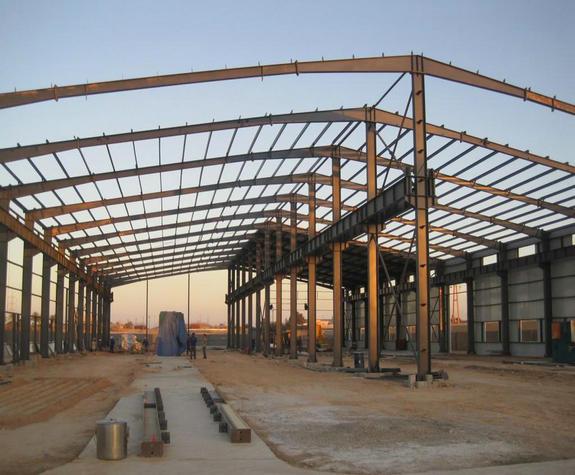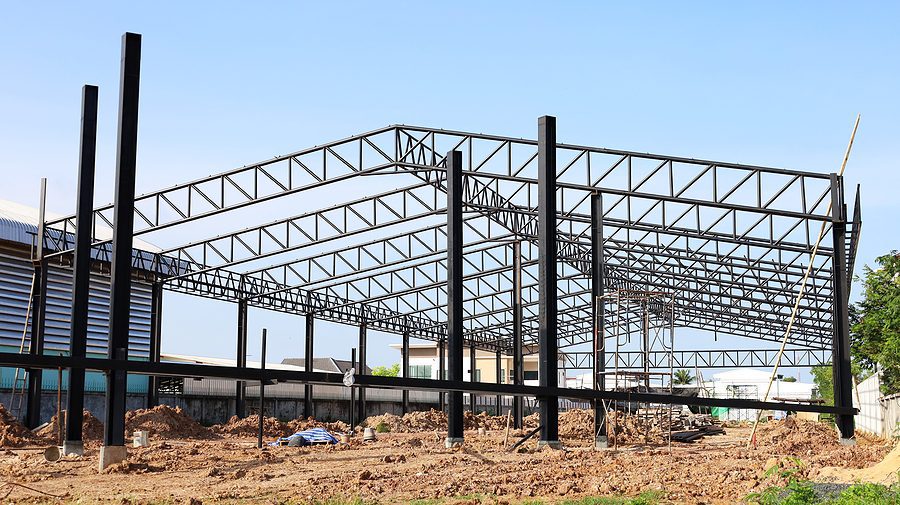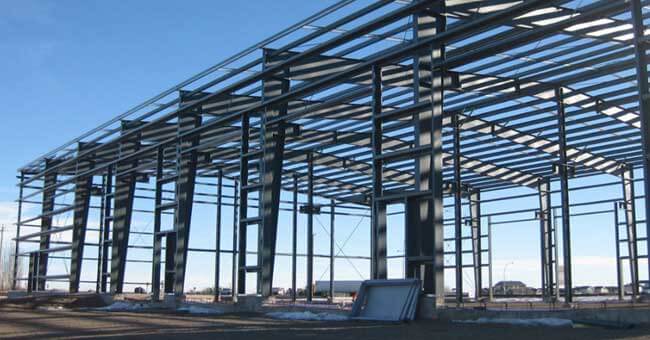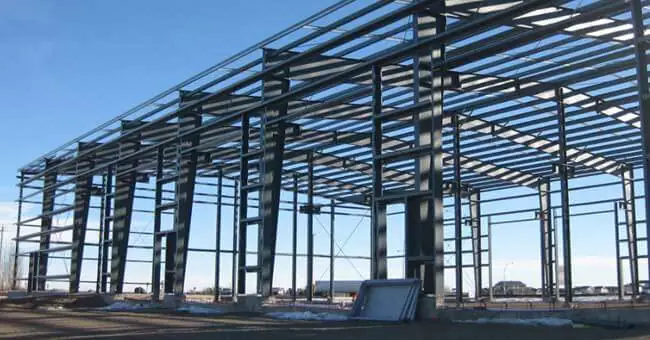Steel Building Ventilation Systems: Solutions for Quality Air
Learn about effective steel building ventilation systems to improve air quality and comfort. Discover the best options for your building.
Steel building ventilation systems play a crucial role in maintaining air quality and occupant comfort. This article discusses the importance of good ventilation, various natural and active ventilation options, key components of ventilation systems, and the best solutions for steel buildings.
By understanding the proper ventilation system, building owners can optimize indoor environments, improve energy efficiency, and maintain occupant health. Find comprehensive information about effective and efficient steel building ventilation systems for your needs.
1.Why is Ventilation Important in Steel Buildings?
Ventilation in steel buildings plays a vital role in maintaining air quality and occupant comfort. Here are several reasons why good ventilation is essential:
- Humidity Control Steel buildings tend to retain heat and humidity. Good ventilation helps control humidity levels, prevent condensation, and reduce the risk of corrosion in steel structures.
- Pollutant Removal Ventilation helps remove air pollutants such as dust, odors, and hazardous chemicals that can accumulate inside buildings.
- Temperature Control An effective ventilation system helps regulate indoor temperature, reducing the load on HVAC systems and saving energy.
- Improved Comfort Fresh air entering through the ventilation system enhances occupant comfort and work productivity.
- Health Maintenance Good ventilation reduces the risk of airborne diseases and prevents the growth of mold and bacteria.
- Meeting Safety Standards Many building codes require adequate ventilation systems to meet safety and health standards.
- Extending Building Lifespan Proper ventilation helps protect steel structures from damage due to humidity and corrosion, extending the building’s lifespan.
Understanding the importance of ventilation in steel buildings allows owners and designers to make informed decisions in selecting and implementing effective ventilation systems.

2. Natural and Active Ventilation Options for Steel Buildings
In designing ventilation systems for steel buildings, there are two main approaches: natural ventilation and active ventilation. Each has its advantages and different applications.
Natural Ventilation
Operable Windows
- Allow natural airflow
- Energy-efficient and low operational costs
- Suitable for small to medium-sized buildings
Roof Ventilation
- Utilizes the chimney effect to move hot air upwards
- Effective for tall buildings or production areas
Cross Ventilation
- Utilizes wind pressure differences
- Ideal for buildings with open layouts
Louvers and Grilles
- Regulate airflow and prevent rain ingress
- Can be adjusted to control ventilation
Active Ventilation
HVAC Systems
- Precisely control temperature, humidity, and air quality
- Suitable for large buildings or those with special requirements
Exhaust Fans
- Remove hot air and pollutants
- Effective for areas with high heat or pollutant production
Mechanical Ventilation Systems
- Use fans to move air
- Can be integrated with air filtration systems
Heat Recovery Ventilators (HRV)
- Maintain energy efficiency by utilizing heat from exhaust air
- Ideal for cold climates
The choice between natural and active ventilation depends on several factors:
- Building size and function
- Climate and environmental conditions
- Indoor air quality requirements
- Budget and energy efficiency considerations
A combination of natural and active ventilation systems often provides the optimal solution, maximizing energy efficiency while meeting specific ventilation needs.

3. Components of Active Ventilation
Active ventilation systems in steel buildings consist of several key components that work together to regulate air quality and temperature. Here are the important components in an active ventilation system:
Air Handling Unit (AHU)
- Functions to process and distribute air
- Consists of fans, cooling/heating coils, and filters
- Regulates air temperature and humidity before distribution
Air Ducts
- Network of channels for distributing air throughout the building
- Made of materials such as galvanized steel or aluminum
- Must be well-designed for airflow efficiency
Diffusers and Grilles
- Regulate airflow into rooms
- Help in even air distribution
- Available in various designs for aesthetic needs
Exhaust Fans
- Remove dirty and humid air from inside the building
- Important for areas such as kitchens, bathrooms, and production spaces
Dampers
- Control the volume of airflow in ducts
- Can be operated manually or automatically
Sensors and Controllers
- Monitor air quality, temperature, and humidity
- Automatically regulate ventilation system operation
Air Filters
- Filter particles and pollutants from incoming air
- Available in various efficiency levels (MERV rating)
Heat Recovery System
- Utilizes heat from exhaust air
- Improves energy efficiency of the ventilation system
Variable Frequency Drive (VFD)
- Regulates fan motor speed
- Optimizes energy consumption according to needs
Humidifier/Dehumidifier
- Regulates air humidity levels
- Important for comfort and equipment protection
Understanding these components is crucial in designing and maintaining an effective active ventilation system for steel buildings.

4. Components of Natural Ventilation
Natural ventilation utilizes natural forces to move air without mechanical assistance. Here are the main components in a natural ventilation system for steel buildings:
Operable Windows
- Allow air to flow in and out
- Available in various types: casement, sliding, awning
- Can be equipped with automatic sensors for control
Roof Ventilation
- Utilizes convection principles to expel hot air
- Types: ridge vent, cupola, turbine ventilator
- Effective in reducing heat load on building roofs
Clerestory Windows
- High windows that allow light and air to enter
- Ideal for creating a chimney effect in buildings
Louvers and Grilles
- Regulate airflow and prevent rain ingress
- Can be adjusted manually or automatically
Wind Towers
- Capture wind at height and direct it into the building
- Effective in areas with consistent wind patterns
Solar Chimneys
- Utilize solar heat to create vertical airflow
- Enhance natural ventilation especially when wind speed is low
Courtyards and Atriums
- Create pressure differences to drive airflow
- Provide green spaces within buildings
Underground Ventilation
- Utilizes stable ground temperature for air pre-cooling
- Examples: earth tubes or labyrinths
Double Façade
- Creates a buffer space between interior and exterior
- Helps control temperature and airflow
Automatic Sensors and Controllers
- Adjust ventilation openings based on weather conditions and needs
- Optimize natural ventilation performance
Reflective Surfaces
- Help reduce heat absorbed by the building
- Enhance the effectiveness of natural ventilation
The selection and integration of these components must consider local climate, building orientation, and specific user needs to achieve optimal natural ventilation in steel buildings.

5. The Best Ventilation Systems for Steel Buildings
Choosing the best ventilation system for steel buildings requires consideration of various factors. Here are some systems considered as the best solutions:
Hybrid Ventilation Systems
- Combine natural and mechanical ventilation
- Optimize energy efficiency and comfort
- Example: Automatic windows integrated with HVAC
Displacement Ventilation
- Supply fresh air from low levels
- Improve air quality and energy efficiency
- Ideal for spaces with high ceilings
Underfloor Air Distribution (UFAD)
- Distribute air through raised floors
- Provide individual control and flexibility
- Suitable for offices and commercial spaces
Integrated Roof Ventilation Systems
- Combine natural ventilation with exhaust fans
- Effective for industrial buildings and warehouses
Heat Recovery Ventilation (HRV)
- Maintain temperature while providing fresh air
- Highly efficient for extreme climates
Demand-Controlled Ventilation (DCV)
- Adjust ventilation based on occupancy and air quality
- Use CO2 and VOC sensors for optimization
Solar-Assisted Ventilation
- Utilize solar energy to drive ventilation
- Reduce dependence on electricity
The choice of the best system depends on building size, function, climate, and budget. Consultation with HVAC experts and building engineers is highly recommended for optimal solutions.

6. Conclusion
An effective ventilation system is a critical component in the design and operation of steel buildings. Good ventilation not only improves indoor air quality and occupant comfort but also contributes to energy efficiency and protection of the building structure.
In choosing a ventilation system, it’s important to consider a combination of natural and active ventilation. A hybrid approach often provides the optimal solution, leveraging the advantages of both methods. Recent innovations such as demand-based ventilation systems and heat recovery technologies further improve the efficiency and effectiveness of steel building ventilation.
Investing in the right ventilation system will provide long-term benefits, including reduced energy costs, increased occupant productivity, and extended building lifespan. By understanding the key components and available options, building owners and designers can make informed decisions to create healthy and comfortable indoor environments in their steel buildings.


Post Comment